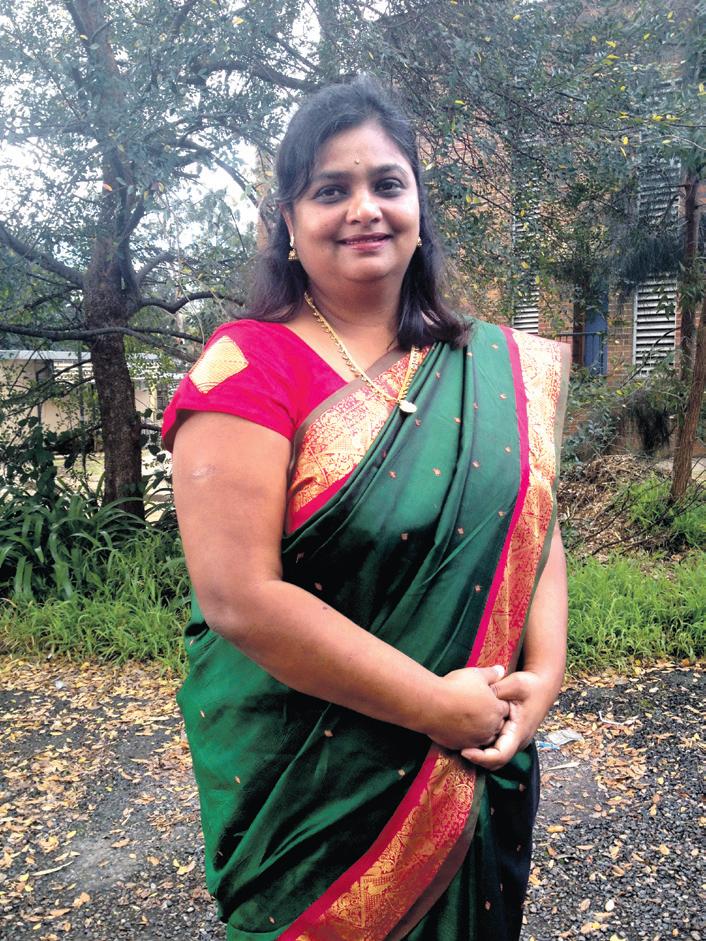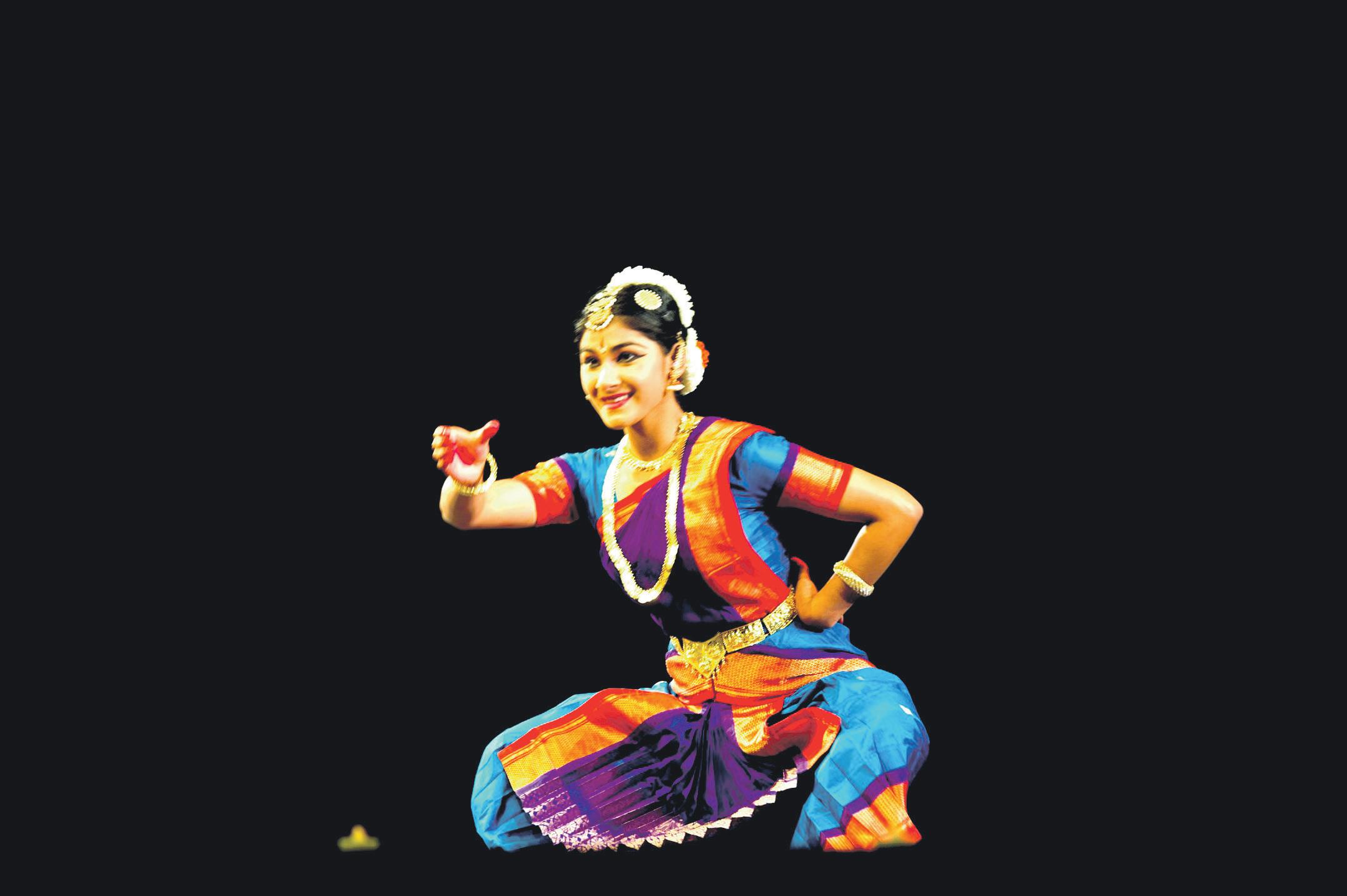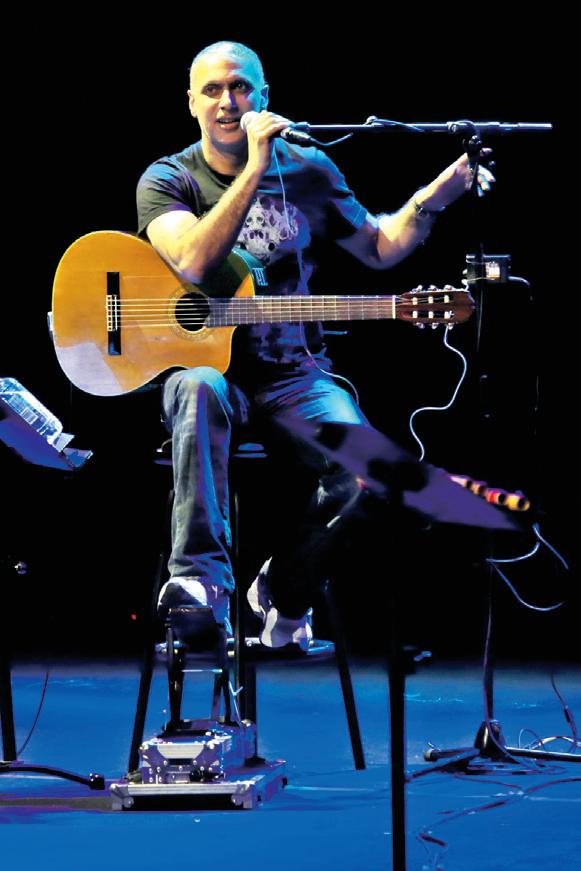
3 minute read
Old favourites come to life again
from 2012-09 Sydney (2)
by Indian Link
Aarthi and Swathi graduate with flying colours at their debut arangetram
is a graduation performance typically undertaken after several years of dance training and only student is capable. It is a test of both the student’s talent as well as the Guru’s knowledge. Aarthi and on September was a huge success, with the sisters gracefully displaying their significant talent and showcasing their Guru Gayatri Krishnamurthy’s boundless knowledge.
Innovation and creativity were the buzz-words of the evening. It was evident in all aspects of the event – right from the selection of items to the unusual method of announcements, and the tasty food served in the interval!
The recital commenced with a Nataraja Anjali in ragam nattai, set to adi talam. In a traditional arangetram, the items follow a typical format or margam as specified by the Tanjore quartet in the early 18th century. Usually, arangetrams begin with an Alarippu, a dance of pure nritta which serves as a warm up for the rest of the performance. The Nataraja Anjali, performed by both sisters as the invocation, included many of the basic movements seen in the Alarippu and was an apt choice for the opening item. The dance paying tribute to Nataraja, the Lord of Dance, was well choreographed and neatly executed. Both girls displayed good anga shudham or body perfection and neat poses.
The items were announced by the dancers themselves, in a prerecorded movie. This unusual mode of compering lent a more intimate touch to the evening, but unfortunately was not without its own glitches. The second item was a keertanam on the Goddess Tripurasundari, deity of Thiruvannur, in ragam sudha saveri performed by Aarthi. As this item took the place of the jathiswaram, a pure nritta piece, the keertanam was choreographed with substantial jathis in a complex rhythmic pattern (kanda chaapu talam). Aarthi rose to the occasion, performing the adavus in perfect rhythm without missing a single beat. As with all artistes, there is certainly scope for improvement – paying more attention to posture in arai mandi and perfecting the teermanams – will go a long way in fine-tuning this elegant dancer.

The highlight of the arangetram was the varnam, presented as a dialogue between the nayika (heroine) enacted by Aarthi, and the sakhi (friend) enacted by
Swathi. This varnam is unique to the Dhananjayans’ students as it was scripted by the Dhananjayans themselves, and composed as a poem by Periyasami Thooran. It follows the format of a ‘siladai’, a dialogue of arguments and rebuttals based on puns and double meanings. This beautiful poem, Aaduvum mayil, was set to ragam reetigowla and adi talam. The sakhi teases the nayika by making fun of her beloved Lord Muruga. She first criticises his father, then his mother and brother, and finally Muruga himself. The nayika counters all the criticisms levered by the sakhi, but gets very upset when she insults Muruga directly. The dance was very well executed by Aarthi and Swathi with both dancers displaying excellent abhinaya. In this varnam, the girls demonstrated their ease with natya or the dramatic element of dance and were able to enact the stories convincingly to an enraptured audience.
Following the intermission, Swathi presented Idadu padam followed by Aarthi in Chinanchiru kiliye, and Swathi again in Maadu meikum kanne. Despite being so young, Swathi displayed great maturity in her abhinaya. This, together with her nimble footwork and innate grace, makes her a very captivating dancer. All three padams were gracefully executed with excellent bhavam and kept the audience captivated. Indeed, the audience seemed to relish watching old, evergreen favourites being presented by the young and talented artistes.
The final item was the popular thillana composed by Dr Balamuralikrishna in ragam kunthalavarali set to adi talam. This pure nritta piece was performed with great élan by Aarthi and Swathi. The high calibre of the dancing served to highlight the exquisite choreography of this melodious thillana. Despite being the ultimate piece in an exacting performance, the girls danced beautifully providing a visual treat for the audience. Watching them flit about the stage reminded me of young gazelles, mesmerizing one and all with their graceful movements.
Aarthi and Swathi are very fortunate to have Smt Gayatri
Krishnamurthy of Thrayee Dance Academy as their Guru. Sisters sharing the stage can often lead to unwelcome comparisons. The girls’ Guru has developed a margam that demonstrates the progression of each dancer through the various aspects of dance, yet gives scope for individual expression and provides minimal grounds for comparisons. She gave ample opportunities for dramatic interplay and produced a show that highlighted the best of Aarthi and Swathi while offering the audience an almost professional performance.

The dancers were ably accompanied by an excellent orchestra comprising of Subha Harinath and Aparna Ramachandran on vocal, Chrissan Segaram on mridangam, Balaji Jagannathan on violin and Ramani Thiagarajan on flute. The Guru, Gayatri Krishnamurthy provided nattuvangam support.
I had a very enjoyable evening watching Aarthi and Swathi debut on stage: hope to have several more opportunities to see them dance in the future.
East meets west at the Sydney Opera House
Renowned musician Nitin Sawhney and his team mesmerise with a wide repertoire of captivating melodies and rhythms


SANDIP HOR
W









